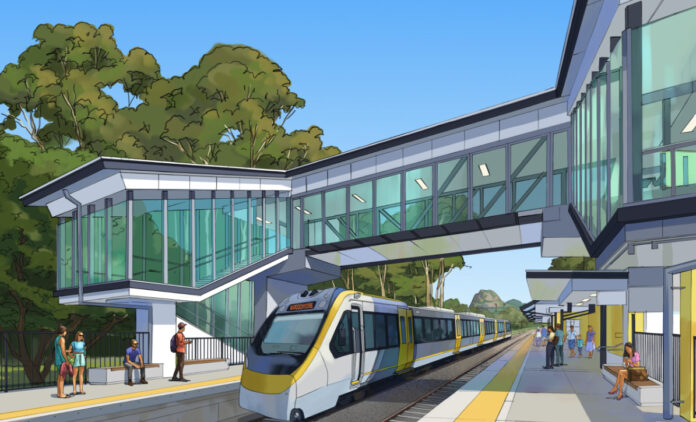Planning for a heavy rail line on the Sunshine Coast is gaining momentum, after a Queensland delegation to Canberra claimed a funding victory for the project.
The Department of Transport and Main Roads has refined the track alignment, unveiled updated concept designs for stations, including one with sea views, and is on track to complete its business case by the end of the year.
Scroll down to see the station plans
The proposed 37km dual line from Beerwah to Maroochydore – dubbed Direct Rail Sunshine Coast – is aimed at catering for a rapidly growing population, in time for the 2032 Olympics.
Proposed corridor refinements have been made to suit station locations, reduce curves in the track – which could enable trains to travel up to 160km/h – and mimimise environmental, cultural heritage and community impacts.
Deputy Premier Steven Miles, who led the delegation to Canberra, said yesterday the federal government would reserve $1.44 billion for the project’s construction, with another $160 million available for a business case, planning and early works.
“The direct Sunshine Coast Rail line will be prioritised as part of the transport program for the 2032 Games,” Mr Miles told parliament.
But Deputy Opposition leader and Member for Kawana Jarrod Bleijie said yesterday the project was “on a track to nowhere”, with the state government refusing to commit funding to build the project.
”Two weeks ago, the Palaszczuk Labor Government was full of confected outrage at their Canberra Labor mates, but now Steven Miles has come back with the exact same deal from Canberra, and is claiming it as a win,” Mr Bleijie said.
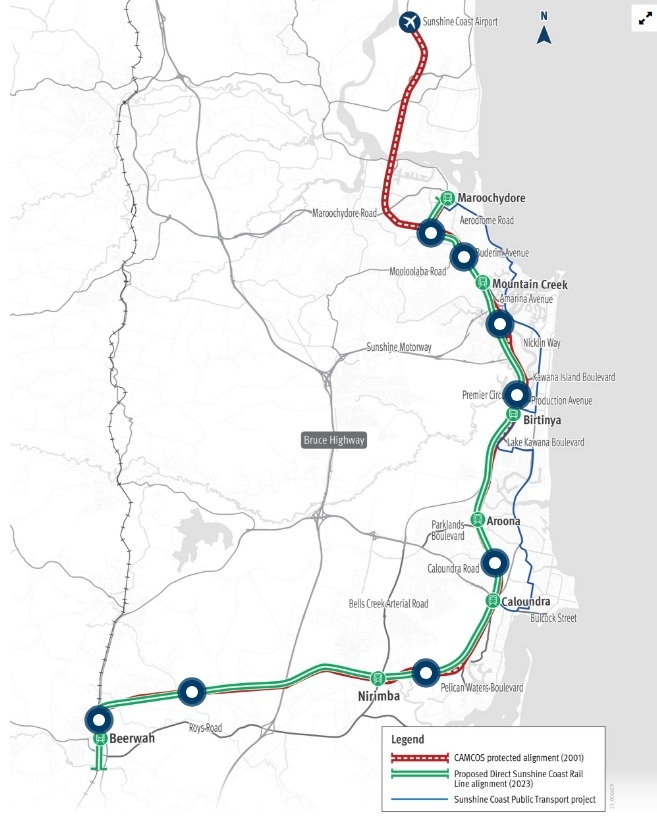
Among eight changes to the DRSC proposal is the introduction of a 1.1km tunnel between Caloundra and Aroona stations, shifting the DRSC-North Coast Line connection to be north of Beerwah Station, straighter stretches east of Beerwah and at Pelican Waters, the track going under Kawana Motorway at Birtinya, the line shifting west at Mooloolah River, track underpasses at Mooloolaba Road, and the line crossing Sunshine Motorway south of Maroochy Boulevard.
There are designs for seven stations: Beerwah, Nirimba, Caloundra, Aroona, Birtinya, Mountain Creek and Maroochydore.
The two-storey Maroochydore Station is expected to be within the emerging city centre, behind Carnaby Street. It would have island platforms, cycle storage and facilities for train turnback.
Caloundra Station would be located south of Caloundra Road. The line and station would be elevated to enable the crossing of Caloundra Road and it should have ocean views.
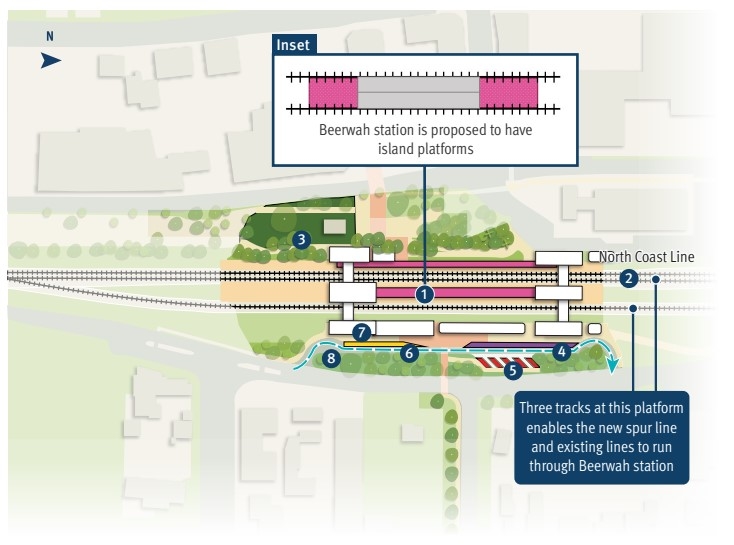
Passengers travelling between Brisbane and Maroochydore will not need to change trains at an elevated Beerwah Station, which will have three tracks to allow for existing lines to run through the station.
Nirimba Station would be adjacent to the town centre, Aroona Station would be elevated over Parklands Boulevard, Birtinya Station would be behind Stockland Birtinya Shopping Centre, and Mountain Creek Station would be next to the Buderim Resource Recovery Centre adjacent to the Sunshine Motorway.
There are also plans for bus services to connect DRSC to major centres and popular locations around the region, including the university, hospital, airport and hinterland towns.
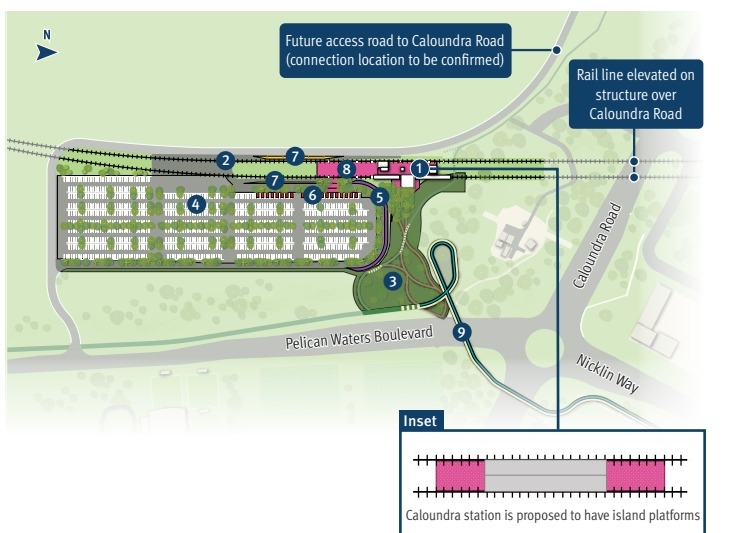
A Transport and Main Roads spokesperson said the DRSC line would be a “legacy project for the region”.
“It will provide a fast, reliable, and sustainable connection between the Sunshine Coast community, Moreton Bay, Brisbane and beyond,” they said.
A corridor was preserved for the rail line, but some homes could make way.
“Property impacts are continuing to be investigated as part of the business case,” the spokesperson said.
About 88 per cent of people surveyed in community consultation said the line would encourage them to use public transport more frequently.
Do you have an opinion to share? Submit a Letter to the Editor at Sunshine Coast News via news@sunshinecoastnews.com.au. You must include your name and suburb.
The Minister for Transport Mark Bailey said TMR was determined to push on and work with the federal government, after the latter expressed concerns the project could cost three times more than expected.
“We remain committed to working with the federal government once the business case has been finalised,” he said.
“We have made it very clear to the Commonwealth that now is not the time to cut infrastructure in Queensland.
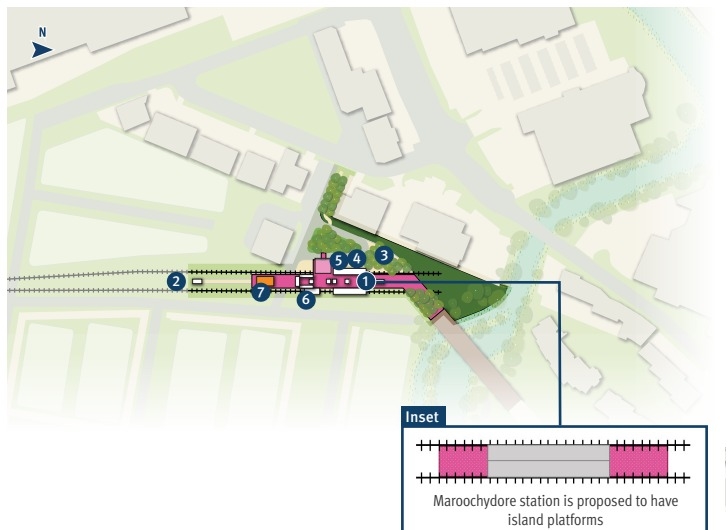
“Queensland’s population is booming with more than 2000 people moving here every week.
“On top of that, Queensland is hosting the world’s biggest sporting event in 2032, the Olympic and Paralympic Games, an opportunity that will benefit Queenslanders for generations to come.”
The state Labor government has contributed $14m to the business case study but will wait for the results before declaring how much it is willing to invest.
Once the business case is completed, it will be considered by levels of government. TMR could then seek funding for detailed design and construction of the preferred corridor and associated infrastructure.
Mr Miles led the delegation of mayors and industry representatives who met with federal Infrastructure Minister Catherine King in Canberra on Wednesday.
They raised concerns after nine projects valued at $363 million were axed in Queensland as part of “outrageous” federal infrastructure cuts, with another five placed on hold.
Meanwhile, there is still uncertainty surrounding the future of the Mooloolah River Interchange Upgrade, a bustling network of roads in the heart of the Coast.
The Australian and Queensland governments previously committed $160m each towards Stage 1 of the project, before the federal government essentially withdrew its support after its review of the nationwide infrastructure pipeline.
Sunshine Coast Deputy Mayor Rick Baberowski was this week part of the “convoy to Canberra” delegation that made the case for more Commonwealth cash for roads and rail.
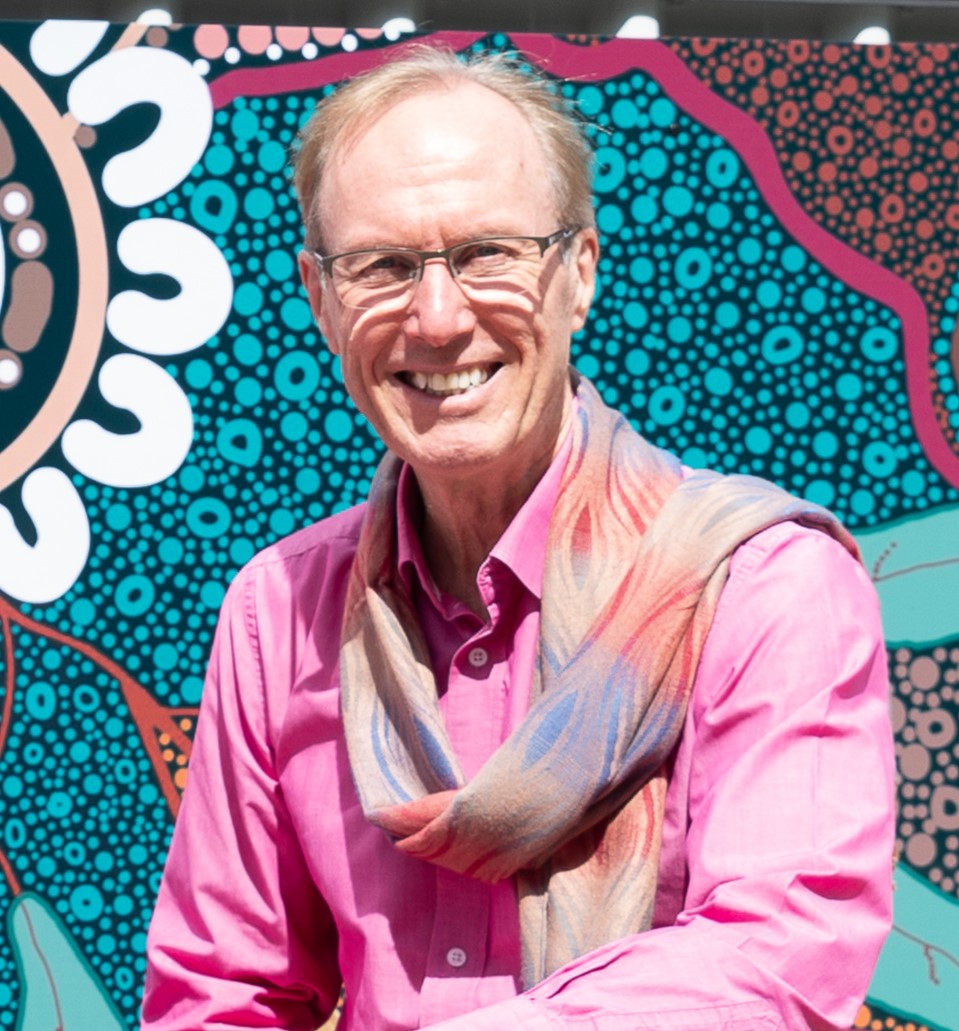
“It was hard for the community to understand why these decisions were made,” Cr Baberowski said.
He said he understood the decisions “much better myself” following Wednesday’s meeting with Ms King and Queensland senator Anthony Chisholm, the Assistant Minister for Regional Development, including over funding for the Mooloolah River Interchange project.
“We now have to work out how we can re-present that argument based on its merits and its investment-ready status,” he said.
The state government has not confirmed whether it would consider funding the project in whole.
Like stories that inform, connect and celebrate the Sunshine Coast? So do we. Join an independent local news revolution by subscribing to our FREE daily news feed at the bottom of this article.


